
EXCELLENCE IS IN OUR NATURE
We envision that 100 years from now, Lake County will be a healthy and resilient landscape with restored and preserved natural lands, waters and cultural assets.
Residents will take great pride in how their forest preserves make their communities more livable and the local economy more dynamic.
Our vibrant communities will thrive, and future generations will protect and cherish these remarkable resources and the highly desirable quality of life that they provide.
Strategic Plan
Our plan maps out the strategic directions, goals and objectives we will use to reach our 100-Year Vision for Lake County. They are grouped within the three pillars of our vision: Leadership, Conservation and People.
Road Map to 2025
In June 2020, our Board approved a new set of objectives and tactics to move strategic plan goals forward over the next five years. Click here to view the complete strategic objectives and tactics in our Road Map to 2025.
Now at the halfway point in the plan, we've invested in big, bold initiatives and small but impactful projects—all to improve the pockets of wilderness and wonder in this coveted place we call home. Read about our progress in the fall 2023 issue of Horizons magazine below.
Initial Plan Objectives
The objectives below defined the initial set of tactics our Board and staff implemented between 2015 and 2020. View our initial set of strategic objectives »
 Objective
Objective: Build broad public awareness for our organization's vision, mission and brand.
Update: In 2019, we completed a brand refresh project to strengthen public recognition and connection to our brand. Staff analyzed brand usage across all departments, sent a survey to 31,000 residents to gauge awareness, created a graphic standards manual, and launched a campaign to share the refreshed brand logo with fellow employees and the public. After nearly 30 years in use, the former version was replaced with the logo on the left. This modern identity more closely aligns with our organization's vision and incorporates symbolic colors representing some of the many benefits forest preserves bring to our Lake County community:
green for trees, foliage and growth, brown for soil and new life, and blue for water.
Learn more »
 Objective
Objective: Develop partnerships to create three 10,000-acre complexes that provide large-scale habitats for woodland, grassland and wetland species.
Update: In collaboration with The Conservation Fund, we developed a Green Infrastructure Model and Strategy (GIMS), which will guide regional, local and site planning by agencies, corporations and citizens of Lake County. The Lake County GIMS will aid the Forest Preserves and other agencies in planning and implementation efforts by providing a consistent modeling framework throughout the county, as well as a common vision for conservation of major landscape types.
Learn more »
 Objective:
Objective: Increase the number of Lake County schools that participate in an educational experience by 5 percent annually, to foster future generations of stewards, users and supporters.
Update: School-based education is the largest single type of contact between the Forest Preserves and Lake County youth. The goal was met in 2016, giving thousands of Lake County school children an educational experience within their Lake County Forest Preserves.
Learn how your school can get involved »
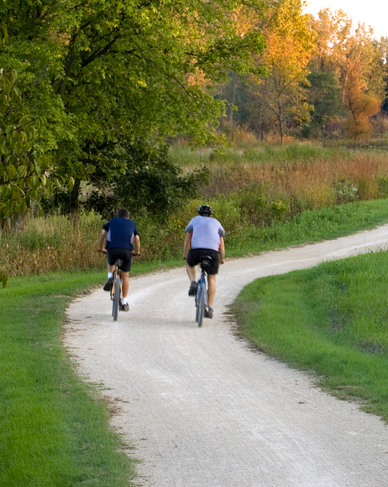 Objective
Objective: Present focused public awareness messages and narratives that inspire people to interact with and support their forest preserves.
Update: In 2015, we completed the final section of the
Des Plaines River Trail, fulfilling a vision 54 years in the making for a contiguous trail and greenway along the river spanning the length of the county—from Russell Road just south of the Wisconsin border to Lake Cook Road. We celebrated this achievement in a big way by challenging the public to travel the entire 31.4-mile trail. Nearly 240 people accepted our DPRT Challenge. Many others took the Challenge by making a donation to our
Preservation Foundation to support this Lake County treasure, and to help us keep it safe and clean.
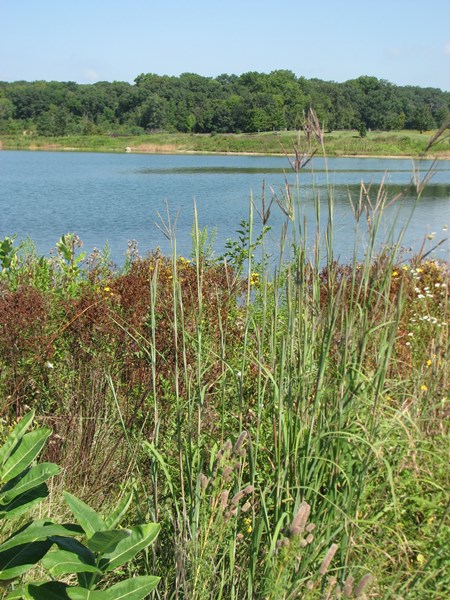 Objective
Objective: Establish processes for developing strategic partnerships that consider and protect our long-term interests.
Update: Mike Tully, our previous Chief Operations Officer, was named to the Board of Directors of the
National Association of County Park and Recreation Officials (NACPRO). NACPRO is a non-profit association through which park and recreation professionals communicate and collaborate about issues, best practices, and legislation bearing on the nation’s public parks and open spaces.
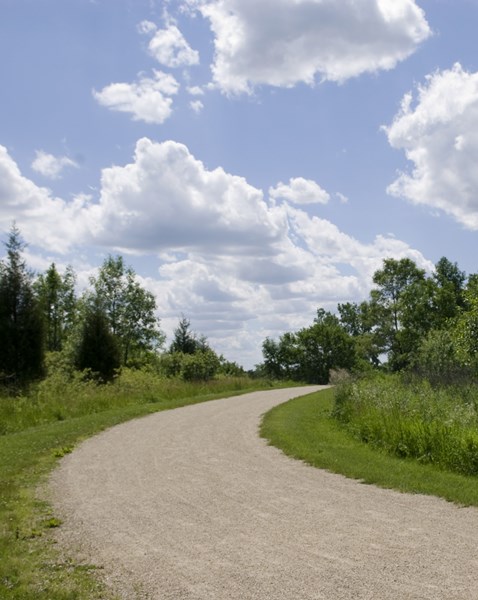 Objective
Objective: Balance new and existing resources with core activities to ensure long-term organizational stability
Update: We are one of very few forest preserve systems nationwide with a AAA bond rating. Ensuring public trust and confidence about our careful
stewardship of your tax dollars is what drives the work of Steve Neaman, our Director of Finance, and members of his accounting and purchasing team. Steve and his team recently developed a 10-year rolling financial plan that is responsive to changing economic conditions. The plan ensures our continued financial and organizational capacity well into the future.
1.jpg) Objective
Objective: Develop partnerships to create three 10,000-acre complexes that provide large-scale habitats for woodland, grassland and wetland species.
Update: In 2015, the Chiwaukee Prairie Illinois Beach Lake Plain (Lake Plain) was designated a Wetland of International Importance under the Ramsar Convention, an intergovernmental treaty for protection of exemplary wetland systems around the world. The Lake Plain received added recognition by the Society of Wetland Scientists (SWS) as a Wetland of Distinction. This publicly and privately protected ecosystem connects 14 different community types along Lake Michigan in southeast Wisconsin and northeast Illinois.
 Objective
Objective: Develop partnerships to create three 10,000-acre complexes that provide large-scale habitats for woodland, grassland and wetland species.
Update: In 2017, a new pedestrian bridge was installed over the Metra Railway in the wee hours of the morning when train traffic was light. The bridge connects 4.5 miles of trails at Middlefork Savanna (Lake Forest) to the Lake Forest Academy and Townline Community Park. Crosswalk improvements at Route 60 and Academy Drive provide safe access. This project is part of a larger effort to connect Middlefork Savanna and the Middlefork Trail and Greenway to the Des Plaines River Trail at MacArthur Woods (Mettawa).
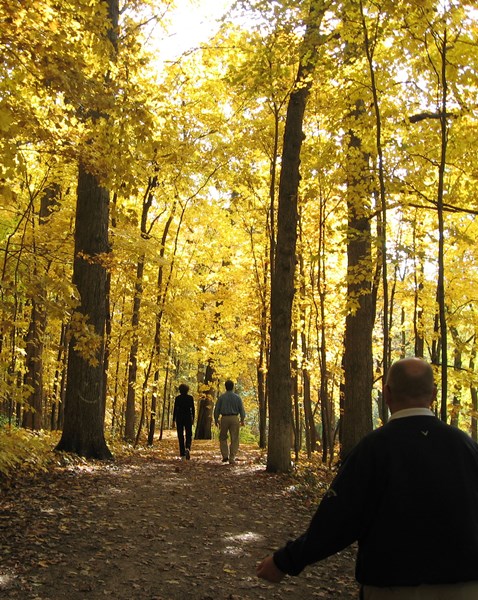 Objective
Objective: Create a culture of excellence by recruiting, developing and retaining a highly skilled, diverse workforce.
Update: Building on our organization’s five core values of Pride, Leadership, Communication, Collaboration, and Respect, we are striving to become one of the “Best Places to Work in Illinois.” This program is designed to recognize outstanding places of employment in Illinois. Results of a two-part assessment—an employer questionnaire and an employee survey—help determine the organizations that make the list. Information from the questionnaire and survey is combined to produce a detailed data set enabling analysts to determine the strengths and opportunities of participating organizations.
 Objective
Objective: Amend management and development practices on our lands to improve water quality and aquatic habitat.
Update: Forest preserves benefit you 24 hours a day, even if you don’t visit them. Here’s a fun assignment: next time it rains, find a storm drain or creek as it enters a forest preserve. Scoop up a jarful of water. Now trace the flow until it leaves the site. Take another scoop and compare the two—cleaner water! The roots of trees and other native plants filter the water, protecting waterways and community water supplies from sediment and pollution. A key purpose of our conservation goal is to improve the water quality and aquatic habitat that forest preserves and other natural lands and waters in Lake County provide. We’re doing this by amending management and development practices on our lands. August is National Water Quality Month. Learn ways you can help protect water sources at
EPA.gov.
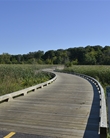 Objectives
Objectives: This public access project supports three of the 13 strategic objectives under Leadership, Public Access, and Organizational Sustainability.
Update: Since 2018, we have been evaluating accessibility within our forest preserves, programs, facilities, and communications to ensure people with disabilities can use and enjoy them. We retained the services of accessibility consultants, The W-T Group, to help us in this effort. They conducted access audits to determine any barriers for use by people with disabilities, and in fall 2018, held three public meetings to hear about access preferences and priorities of people with disabilities, and of agencies that serve people with disabilities. We continue to identify necessary retrofits to improve accessibility and develop a phased schedule to implement them.
 Objective
Objective: Balance new and existing resources with core activities to ensure long-term organizational stability
Update: To become a model of sustainability through conservation, one of our objectives is to reduce kilowatt-hours purchased by 35 percent. With fiscal year 2013–2014 as a baseline, 4,862,894 kWh were purchased. For 2017–2018, we purchased 4,360,735 kWh—a reduction of 502,159 kWh, or 10.3 percent. We achieved this over the past four years by eliminating underutilized buildings by 14 percent, from 161 buildings down to 138, and by improving energy efficiency. By converting the lighting in our General Offices, we leveraged a rebate from the Illinois Department of Commerce and Economic Opportunity to lower energy consumption by 23,860 kWh per year. We’re well on our way to reducing what we spend on electricity.
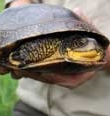 Objective
Objective: Amend management and development practices on our lands to improve water quality and aquatic habitat.
Update: We adapt management and development practices on our lands to improve water quality and aquatic habitat. Our ecologists have presented projects related to this goal at the Illinois Lake Management Association’s annual conference. Staff shared the story of returning a sediment-filled lake back into a free-flowing stream. We shared our expertise of semi-aquatic mammals and how to mitigate damage through adaptive management and collaboration. Ecologists presented a partnership of nine public agencies in Illinois and Wisconsin working to protect one of the largest known populations of endangered Blanding’s turtles in the region. Each project requires complex planning to restore natural areas and improve water quality across diverse landscapes in Lake County. Learn ways you can help protect water sources at
EPA.gov.
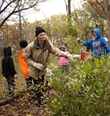 Objective
Objective: Eradicate buckthorn across 4,000 acres of public and private land, through a collaborative pilot project that broadens invasive species awareness, leading to action for improved ecological health.
Update: Part of our 100-year vision is to conserve nature at a landscape-scale. Residents are our most important partners in this effort. By developing a network of critical landscapes, everyone can work together to safeguard the resources and places that benefit people, wildlife and the economy. Native flowers, grasses and forbs play an irreplaceable role in increasing biodiversity. These indigenous plants provide food and homes for insects, birds and mammals. Healthy habitats are essential for ecological processes, such as capturing carbon, recharging groundwater, maintaining water quality, and storing floodwaters. A large tree can remove more than 1,000 pounds of carbon dioxide from the atmosphere per year. Forest soils can store 50% more water than urban, developed land. A stand of woodland can intercept more than 200,000 gallons of stormwater per acre annually. In turn, healthy homes help maintain healthy habitats.